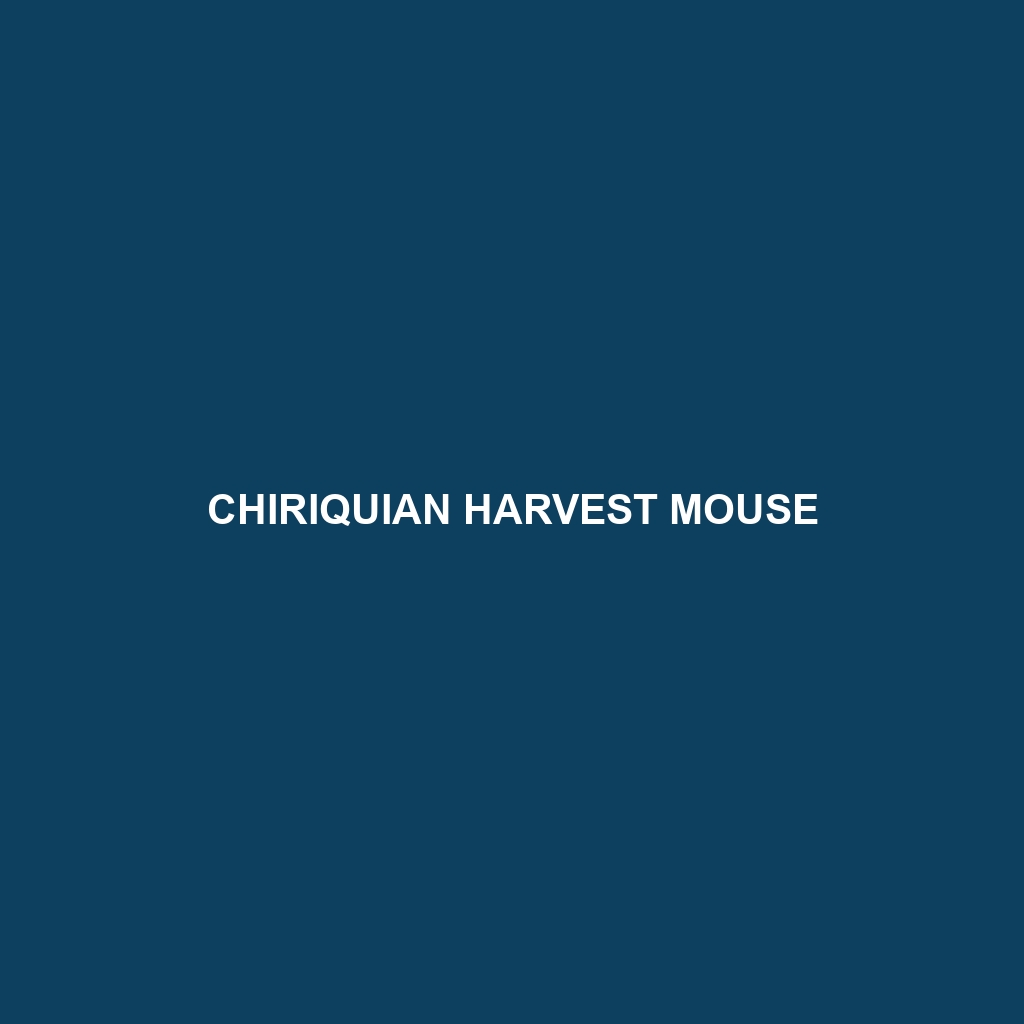Chiriquian Harvest Mouse
Common Name: Chiriquian Harvest Mouse
Scientific Name: Reithrodontomys creper
Habitat
The Chiriquian Harvest Mouse is primarily found in the mountainous regions of Central America, particularly within the cloud forests of Costa Rica and western Panama. This species thrives in environments characterized by humid conditions and high vegetation density, where they can find ample cover and food sources.
Physical Characteristics
This small rodent typically measures about 8 to 10 centimeters in body length, with a tail that can extend an additional 7 to 9 centimeters. The Chiriquian Harvest Mouse displays a distinct coloration, featuring a soft grayish-brown fur across its back, with a lighter cream or white underbelly. Its large eyes and relatively elongated ears allow it to navigate effectively in low light, while its sharp claws assist in climbing and burrowing.
Behavior
Chiriquian Harvest Mice are primarily nocturnal, exhibiting a range of behaviors that enhance their survival. They are known for their agility, often climbing trees and shrubs in search of food. Their social structure includes small family groups, and they communicate through a variety of vocalizations and scent markings to establish territory and warn of predators.
Diet
The diet of the Chiriquian Harvest Mouse consists mainly of seeds, fruits, and various plant materials. They are especially attracted to grains, which they forage during the night. Their feeding habits not only provide sustenance but also play a crucial role in seed dispersal within their forest habitat.
Reproduction
Breeding in Chiriquian Harvest Mice typically occurs twice a year, coinciding with the warmer, wetter months. Females may produce litters of 3 to 6 offspring after a gestation period of approximately 21 days. Young mice are weaned at around three weeks and begin to explore their environment shortly thereafter, often remaining with their mother until they are mature enough to establish their own territory.
Conservation Status
The Chiriquian Harvest Mouse is currently classified as vulnerable due to habitat destruction and fragmentation resulting from agricultural expansion and urban development. Conservation efforts are crucial to preserve their natural habitats and mitigate the effects of climate change.
Interesting Facts
One fascinating aspect of the Chiriquian Harvest Mouse is its ability to construct intricate nests using grasses and leaves, which can often be found near the bases of trees or in dense vegetation. These nests provide shelter from predators and harsh weather conditions.
Role in Ecosystem
The Chiriquian Harvest Mouse plays an important role in its ecosystem as a seed disperser, helping to maintain plant diversity within its habitat. It serves as a food source for various predators, including snakes, birds of prey, and larger mammals, thereby contributing to the food web and ecological balance.
